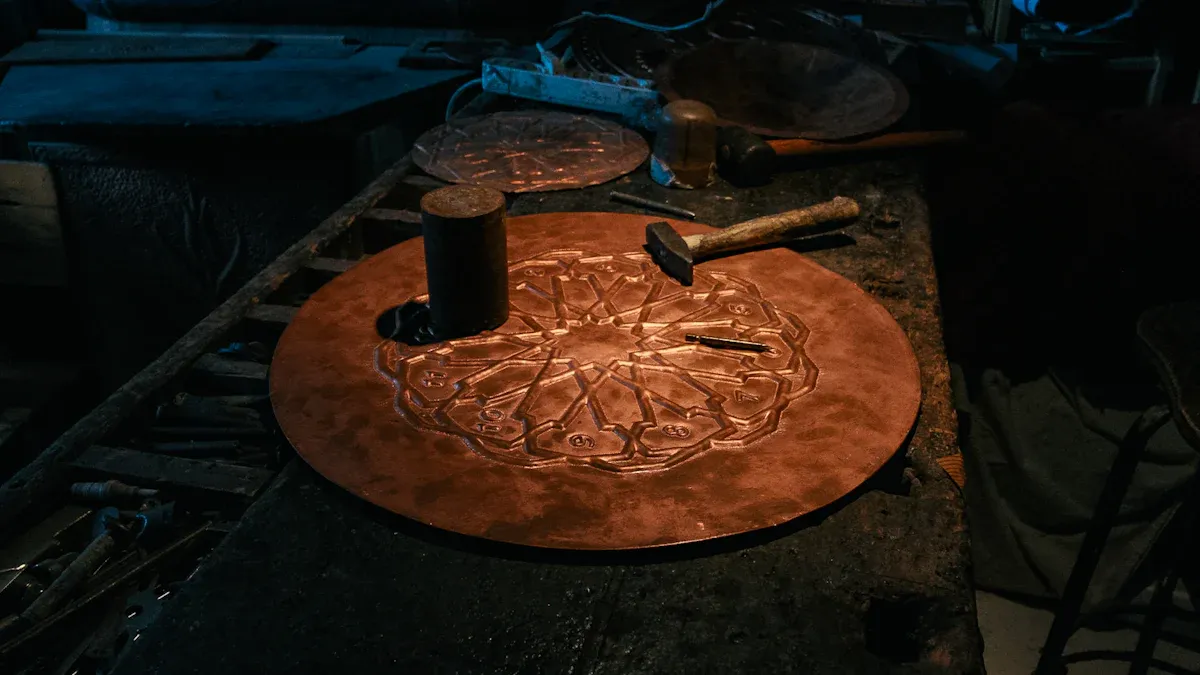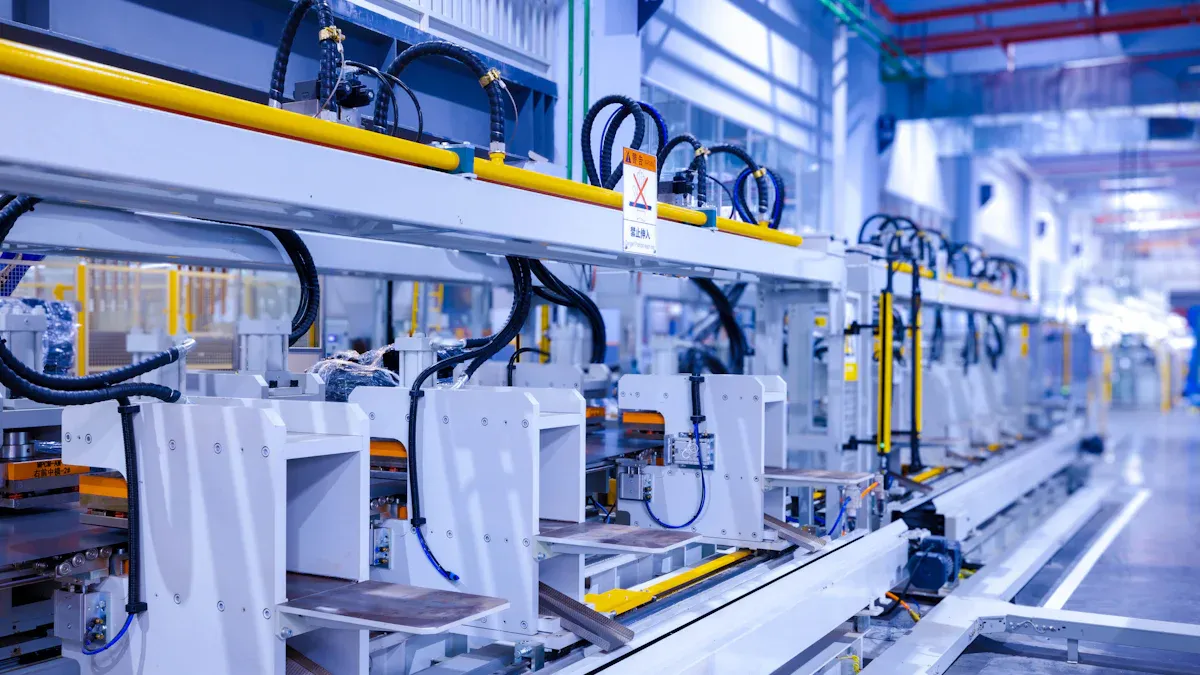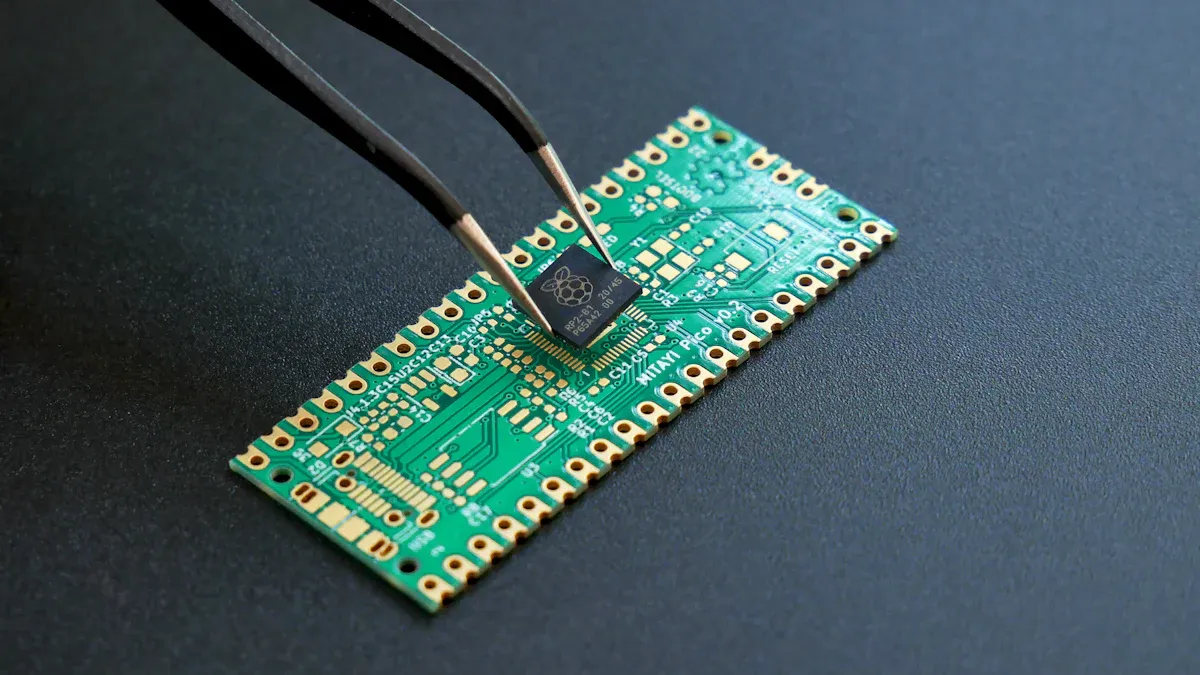The Application of Horizontal Copper Sinking Technology in PCB Production

Horizontal Copper Sinking is a new way to make PCBs. It adds an even copper layer to PCB surfaces. This helps with better conductivity and strength. Older methods had problems like uneven coating and slow work. Using this method, companies like LT CIRCUIT make PCBs faster and stronger. It also works well for modern high-tech devices.
Key Takeaways
Horizontal Copper Sinking makes PCB production faster and more efficient.
Machines help apply copper evenly, making PCBs stronger and reliable.
This method is eco-friendly, using fewer chemicals and less waste.
It works well for factories needing to make many PCBs quickly.
Quality checks are important to ensure PCBs meet high standards.
Traditional Copper Sinking in PCB Production
Overview of the traditional copper sinking process
The old way of copper sinking has many steps. Each step is important to prepare the PCB and get good results. Here’s how it works:
Alkaline degreasing: This step cleans grease and dirt off the PCB. It also gets the holes ready for the next steps.
Micro etching: The surface is roughened to help copper stick better. This makes the copper layer bond strongly to the PCB.
Pre leaching: This step protects the palladium tank and helps activation work well.
Activation: Palladium is added to the PCB surface. This is a key step to start adding copper.
Degumming: The palladium is uncovered to help copper stick during the next step.
Copper precipitation: Copper is added in a chemical reaction, forming a thin layer on the PCB.
This method has been used for a long time. But it has some problems that make it less effective.
Challenges and limitations of traditional methods
Old copper sinking methods have trouble meeting today’s needs. One big problem is uneven copper layers. This can make the PCB weaker and less reliable. The process also takes a lot of time, slowing down production.
Another issue is that it needs a lot of manual work. This can cause mistakes and uneven results. It also creates more waste, which is bad for the environment. As technology grows, these problems make it hard for old methods to keep up with modern demands.
This is why new ideas like Horizontal Copper Sinking are important. They solve these problems and make PCB production faster and better.
Horizontal Copper Sinking Technology

Definition and principles of horizontal copper sinking
Horizontal Copper Sinking is a new way to coat PCBs. It adds an even copper layer by moving PCBs flat through chemical baths. Each bath has a job, like cleaning or coating the board. This flat movement helps cover the whole surface, including small holes.
This method uses controlled machines for better results. The PCB goes through special solutions that clean and coat it with copper. Keeping the board flat stops uneven layers, a problem with older methods. Machines make this process precise and reliable, perfect for advanced PCBs.
Tip: Horizontal Copper Sinking is great for modern devices needing accuracy.
Key differences from traditional copper sinking
Horizontal Copper Sinking is different from old methods in many ways. First, it keeps the PCB flat, unlike the vertical hanging in older ways. This stops gravity from causing uneven copper layers.
Second, it uses machines instead of manual work. Old methods need people to help, which can cause mistakes. The horizontal way uses machines for steady and accurate results.
Third, it works faster. Many boards can move through the system at once. This saves time compared to the slow, step-by-step old methods.
Lastly, it’s better for the environment. It uses less chemicals and creates less waste. Companies like LT CIRCUIT use it to make high-quality PCBs while caring for the planet.
Note: Horizontal Copper Sinking gives faster, better, and greener results.
The Horizontal Copper Sinking Process at LT CIRCUIT
Step-by-step process of horizontal copper sinking
At LT CIRCUIT, the copper sinking process is carefully planned. First, the PCB is cleaned with special solutions to remove dirt. This cleaning helps the copper stick well to the surface. Next, the board goes into a micro-etching bath. This bath makes the surface rough so copper can attach better.
After etching, the PCB is activated. A palladium solution is added to start the copper bonding process. Then, the board is placed in a copper sinking bath. Copper ions stick to the surface and fill the holes evenly. Finally, the board is rinsed and dried to make it clean and ready for the next steps.
This automated process avoids mistakes caused by manual work. Keeping the PCB flat ensures even copper layers. LT CIRCUIT meets the needs of modern electronics with this method.
Materials and equipment used in LT CIRCUIT's process
LT CIRCUIT uses advanced tools and materials for copper sinking. Alkaline solutions clean grease and dirt from the PCB. Micro-etching solutions prepare the surface for copper to stick. Palladium activators help start the copper bonding process.
The equipment includes machines that move PCBs flat through each step. This flat movement stops uneven copper layers from forming. Chemical baths with temperature controls make sure each step works well. Rinsing and drying machines finish the process, leaving the boards ready for the next stage.
Using high-quality tools and materials, LT CIRCUIT gets great results. This method speeds up production and makes strong, even copper layers.
Advantages of Horizontal Copper Sinking

Enhanced efficiency and production speed
Horizontal Copper Sinking makes PCB production faster and easier. It uses machines to do the work, so fewer mistakes happen. This also speeds up the process. PCBs move flat through the system, letting many boards be made at once. This method helps make more PCBs in less time without losing quality.
Machines used in this process need less fixing. This keeps the production running smoothly. Industries like electronics and telecom benefit from this speed. They need quick results to meet tight schedules.
Tip: Faster production helps meet demand and beat competitors.
Improved quality and uniformity of copper layers
Horizontal Copper Sinking creates even copper layers on PCBs. The flat position of the boards ensures copper spreads evenly everywhere. This includes small holes and edges. Even layers make PCBs stronger and better for high-tech uses.
Old methods often leave uneven copper because of gravity or mistakes. Horizontal Copper Sinking fixes this with precise machines and chemical baths. The result is a smooth, high-quality copper layer that works well for modern devices.
Note: Even copper layers improve performance and make PCBs last longer.
Scalability for high-volume production
Horizontal Copper Sinking works well for making lots of PCBs. Its machines can handle many boards at once, making it great for big factories. This is important in places like Asia-Pacific, where most PCBs are made. For example:
China makes over half of the world’s PCBs.
Suzhou factories produce 40,000 tons of copper agents yearly, meeting 15% of global needs.
Guangdong’s Pearl River Delta has over 200 factories, cutting delivery costs by 18-22%.
These examples show how this method supports large-scale production. Whether you need hundreds or thousands of PCBs, this technology works fast and keeps costs low.
Tip: Scalability helps your business grow while staying efficient.
Quality Control in Horizontal Copper Sinking
Why quality control is important
Quality control is key to making Horizontal Copper Sinking successful. It ensures PCBs, the heart of electronics, are reliable. Without checks, defects can harm how products work. Finding problems early saves time and money. Fixing issues later costs more and can lead to recalls.
Following industry rules is another reason quality control matters. It keeps your business safe from fines and legal trouble. It also shows customers your products are trustworthy and meet high standards. When PCBs meet expectations, customers are happier. This builds trust and brings repeat orders.
How LT CIRCUIT ensures quality
LT CIRCUIT focuses on quality during Horizontal Copper Sinking. They use advanced tools to check every PCB for problems. Machines inspect for uneven copper or missed spots. These checks catch issues before they affect the final product.
Special machines watch over the chemical baths used in the process. They control temperature and solution levels to keep results consistent. This makes sure copper layers are even and strong. LT CIRCUIT also tests finished PCBs to ensure they work well with modern devices.
The company follows strict industry rules to ensure quality. Their steps include:
Spotting defects to make products reliable.
Catching problems early to save money.
Following rules to avoid fines.
Making products that meet customer needs for better satisfaction.
By focusing on quality, LT CIRCUIT makes PCBs that work well and meet your needs.
Horizontal Copper Sinking has changed how PCBs are made. It works faster, makes better boards, and handles large orders easily. This method creates smooth copper layers, making PCBs stronger and great for modern gadgets. It also saves time and helps the environment, fixing problems with older ways.
LT CIRCUIT leads in making PCBs with this new method. They use smart machines and careful steps to make top-quality boards. LT CIRCUIT keeps up with new tech needs, giving you the best products every time.
FAQ
What is Horizontal Copper Sinking Technology?
Horizontal Copper Sinking Technology is a new way to add copper to PCBs. It uses machines to move boards flat through chemical baths. This makes sure the copper spreads evenly. The process is faster and gives better results than older methods.
Why is it better than traditional copper sinking?
Horizontal Copper Sinking works quicker and makes even copper layers. It reduces waste and avoids mistakes caused by manual work. This method is great for making PCBs for advanced devices.
Tip: Use this method for strong and dependable PCBs.
Can Horizontal Copper Sinking handle large-scale production?
Yes! This method is built for making lots of PCBs. Machines can process many boards at once. It’s perfect for factories needing fast and high-quality production.
Is Horizontal Copper Sinking environmentally friendly?
Yes, it is! This process uses fewer chemicals and creates less waste. It helps businesses follow eco-friendly practices and protect the planet.
Note: Green manufacturing helps both companies and the Earth. 🌍
How does LT CIRCUIT ensure quality in this process?
LT CIRCUIT uses smart tools to check every step of the process. Machines look for problems, control chemical baths, and make sure copper layers are even. Testing ensures each PCB meets high standards.
Emoji Insight: 🛠️ Smart tools = Great PCBs!
See Also
Understanding Vacuum Two-Fluid Etching Machines for Precise PCB Manufacturing
Explore Cutting-Edge HDI PCB Prototyping Methods Right Now
Enhancing PCB Production Yield with Online AOI Technology
